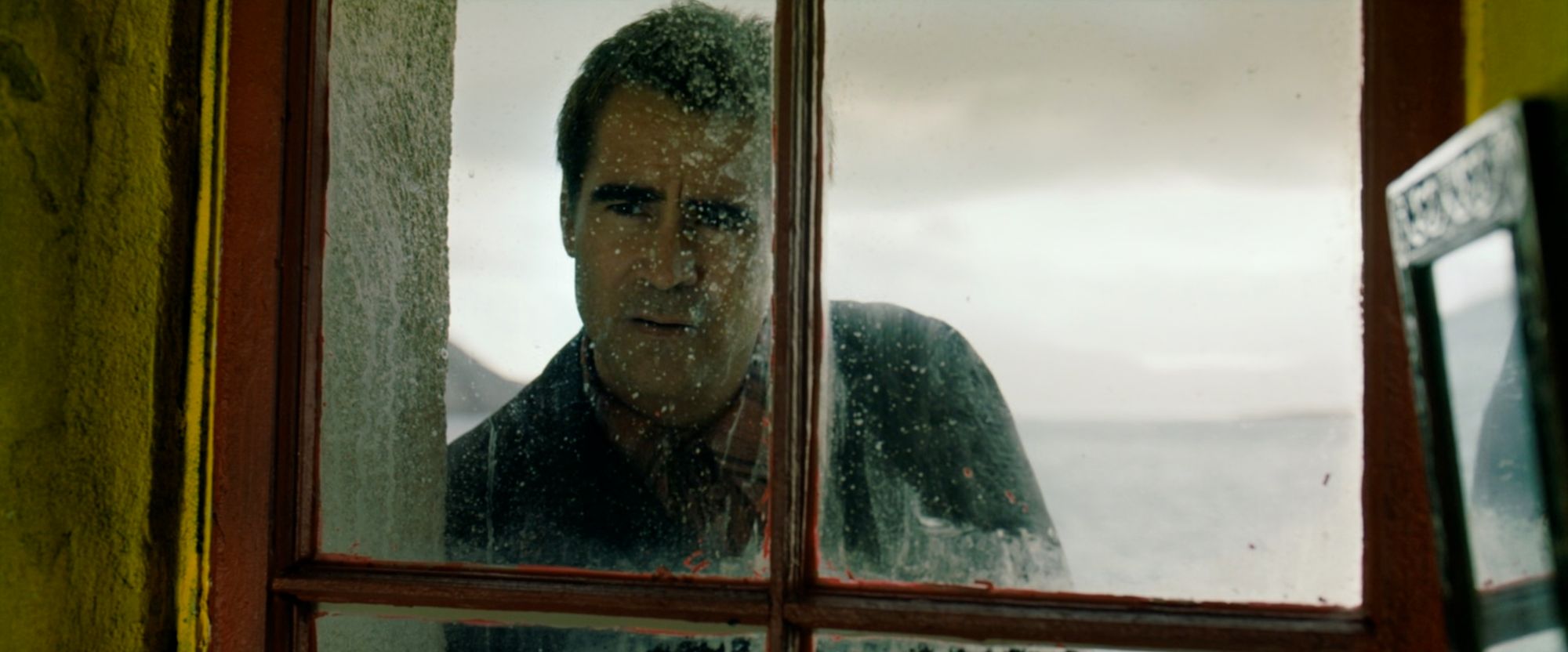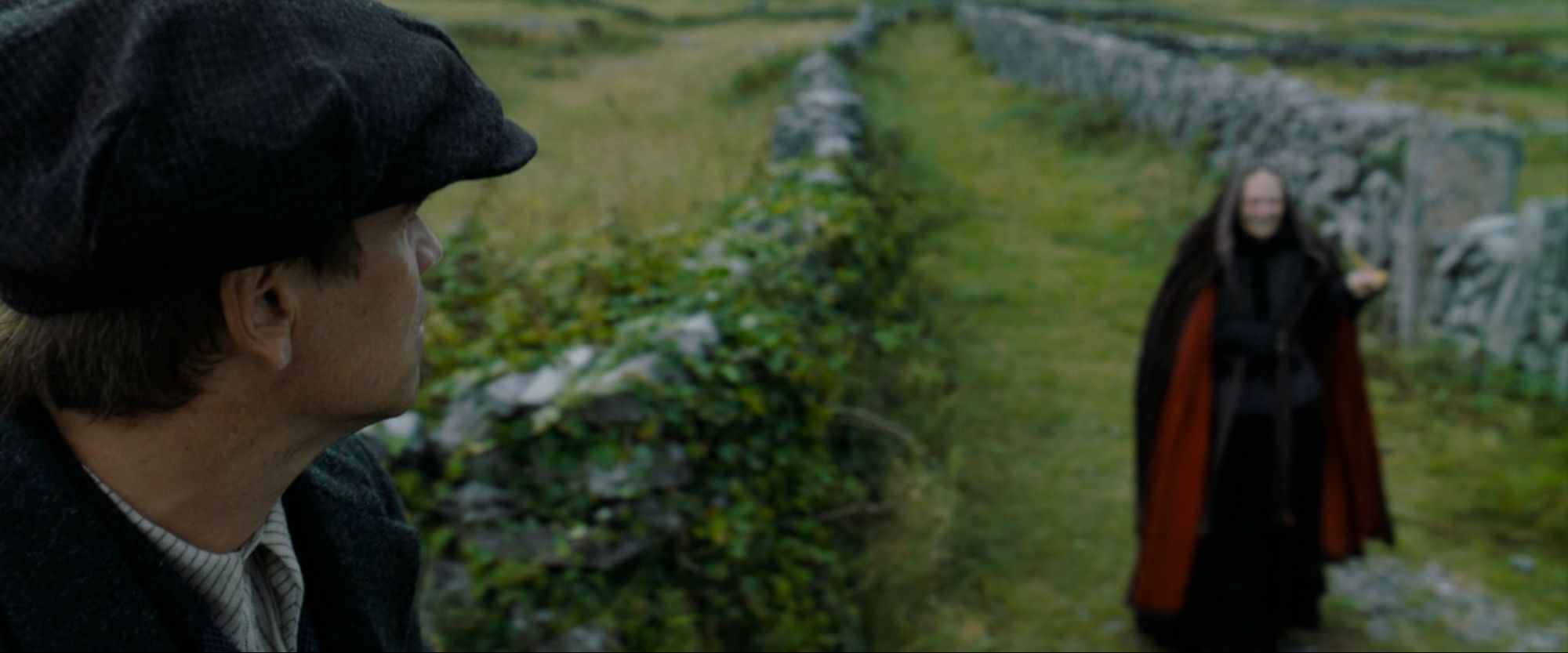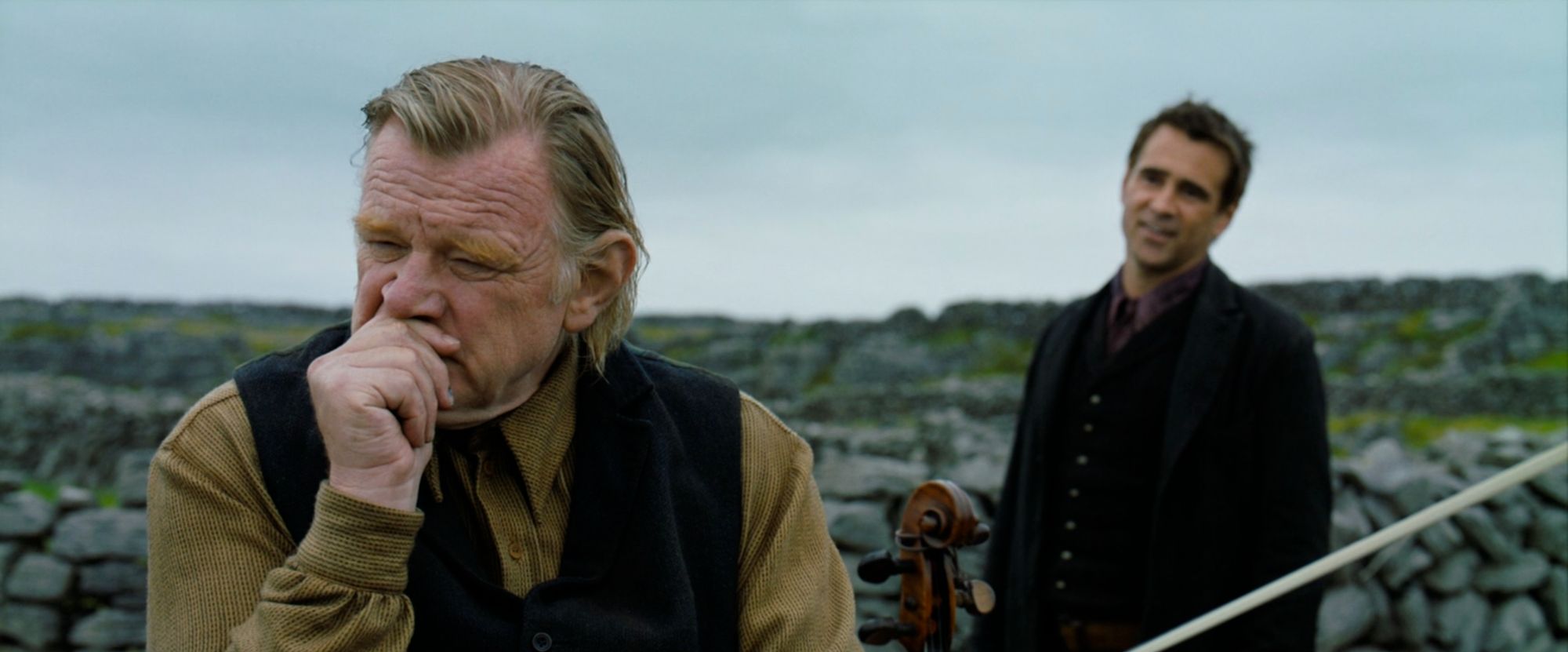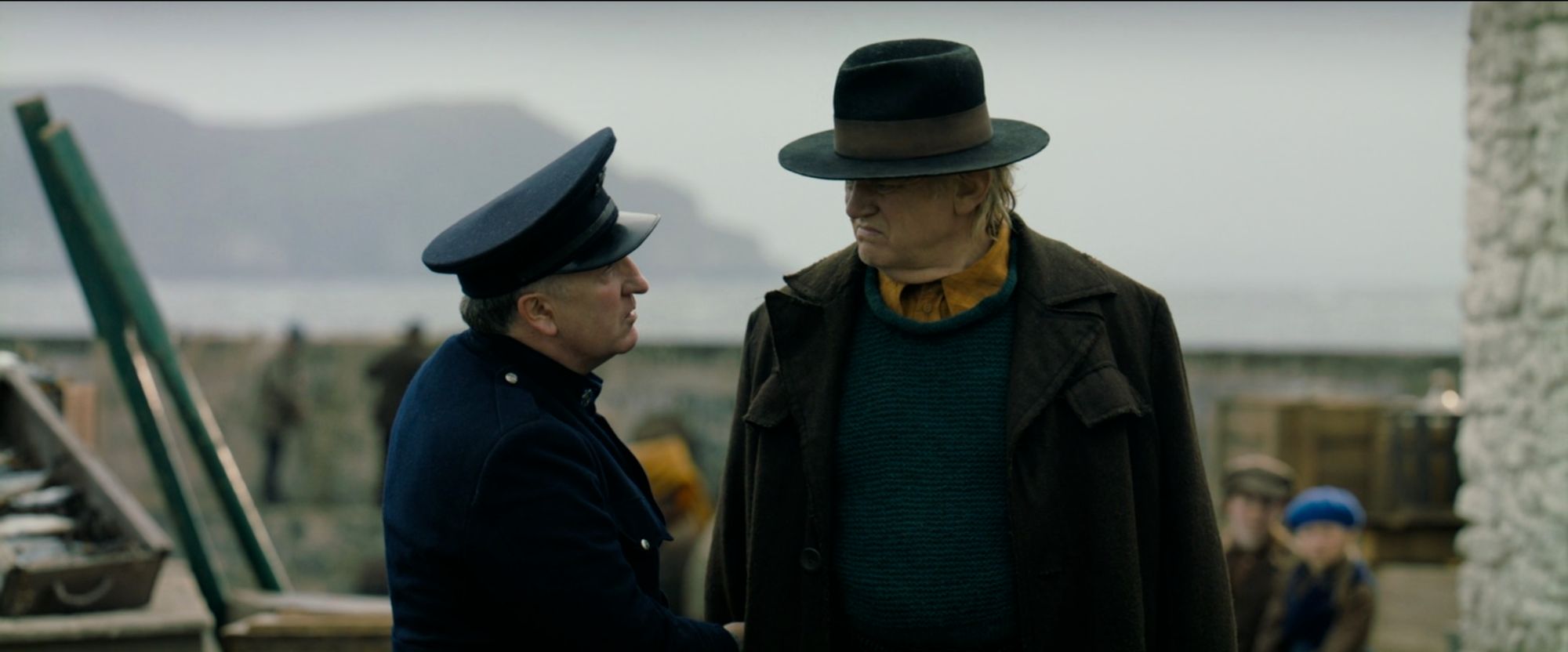The Banshees of Inisherin: A Movie Review
An electrifying, melancholic fable, and Martin McDonagh's best movie to date.

Martin McDonagh’s last movie was Three Billboards Outside Ebbing, Missouri, released more than five years ago. It did great at the box office, won a sweep of awards, and was critically well received, so the gap between it and The Banshees of Inisherin seems surprising.
McDonagh is a director who hasn’t aimed for prolific output, though. He writes movies (as well as plays), and when it comes to making them he has previously taken a “we’ll see” approach. He has valued traveling and having fun as well as his career.
Word on the street (leaked through interviews in well-known publications) is he has started to feel “a tremendous sense of time slipping away” — in the words of Colm, one of the main characters of his new film. He intends to focus more on movies than stage plays, in part due to their lasting qualities — also a sentiment Colm identifies with.
Which is a way of saying, the script of Banshees has McDonagh’s soul written into parts of it. At least, in the two main characters at conflict with each another.
As for the gap between movies? He had a lot of success in his last outing, and took time to make the follow-up he wanted. Good for him.
This blows Three Billboards out the water. It was good, though flawed. This is spellbinding — dark, funny, and thought-provoking. For my money, it’s his best movie to date.
It has a small film world, and tells a story that feels personal. It is akin to In Bruges in spirit, and a million miles away from the 2012 star-studded crime comedy Seven Psychopaths, which was a pure Hollywood production. This one has Irish blood, and the script is very theatrical.
And yet, (“he says as if he’s English”) the movie is also very cinematic. Ben Davis, who has worked with Martin on everything after In Bruges, is Director of Photography. He makes stunning use of off-coast locations around West Ireland. There are a handful of shots to die for. If the writing and acting steal the show, it’s not because the photography is less than excellent.
Movies that hit theatrical and cinematic notes without compromising either are, almost always, movies I love. Cinema as “theatre version 2.0” is a concept close to my heart, and Banshees embodies it well.

The story begins on a typical day on the fictional island of Inisherin, 1923. We follow the happy-go-lucky Pádraic (Colin Farrell) as he makes the rounds, greeting neighbours on a walk through the island’s farmland to call on his friend, Colm (Brendan Gleeson). We can surmise he pops in on Colm at 2pm each day, to bring him to the pub. He also spends most nights at the pub with him. When he arrives he finds him sat on a chair, smoking, gaze fixed gloomily ahead on the fireplace, ignoring Pádraic at the window.
Pádraic returns home in a state of confusion and explains his early arrival to his sister, Siobhán (Kerry Condon). “Maybe he just doesn’t like you no more,” she says with a wry smile. When Pádraic returns to the pub, the reason for the snub becomes clear. Indeed, Colm has simply decided he doesn’t like him, and doesn’t want to talk to him no more.
Pressed on the matter, Colm offers his rationale. Pádraic has not done or said anything malicious to offend, damage, or hurt him. He simply finds him dull, and believes he is wasting the limited time he has left on Earth by chatting with him for hours each day when he could be penning fiddle tunes. Leaving something lasting behind when he dies has taken on a sense of urgency to him.
The day is April 1, and when Pádraic notices this on the calendar it pushes him to persist the next day, hoping it was an April Fools’ Day prank, but no, Colm is perfectly serious. If the film was in need of an alternative, much worse title, it could be April Fools.
Colm escalates to a drastic threat after Pádraic gets the local priest to put in a word on his behalf. If Pádraic does not leave him alone to work on his fiddle tunes, he will cut off the fingers of his fiddle-playing hand and give them to him, until he has no fingers left to play the fiddle with. It’s an extreme, bizarre, and self-defeating threat, but he means it.

The movie begins on the day that acts as the tipping point, with Pádraic being taken by surprise our first glimpse of events. We never see Pádraic and Colm as friends, or exactly what set Colm’s mind against Pádraic, but we are told they were previously inseparable.
The story plays out from there, as the fragile dynamic of the island is destabilised by chaos, despair, and doom — shot through with black humour. In the background, explosions from the Irish Civil War can be heard on the mainland. The drama unfolding functions as a microcosm of that conflict, though it doesn’t get lost in the details of parable.
The writing is superb, with the perspectives of Colm and Pádraic balanced against each other so that, although Colm might come across as a callous and cold-hearted monster at first, there is room to see things from the other side. It is a story that provokes inner debate as you are watching. The script feels like it was worked on for a long time, with layers of meaning weaved in.
Pádraic is one of life’s good guys, he is assured by the locals — except when he’s drunk. He is sweet, but in moments overtly glib — which his sister seems to recognise and expertly deflect. He is the nicest guy in the world — but watch what happens when you say “no” to him. His show of puppy dog hurt feelings could almost be seen as tactical, but we don’t quite have enough context to be sure. When he visits Colm’s house and finds it empty, he instinctively tries on a fool’s mask. Is he wearing a fool’s mask in real life, too?
Still, for the most part he seems like a genuinely friendly guy, and loudly espouses that as a value.

Colm has a similar mix of conflicting character qualities. He is stubborn to the nth degree, delusional in some ways, and foolishly proud in others. He suffers from boredom, a need to be amused, and is haunted by despair. He is, also, simply looking to find some peace and do something lasting with his life. He attempts to balance honesty with compassion, when you look at his interactions with others, including with Pádraic.
The more you think about Colm and Pádraic, the more you question. It becomes harder to pick a corner, and it’s hard not to oscillate between the two perspectives at points. The subtlety of causes from which conflict detonates is the movie’s genius.
Pádraic’s sister, Siobhán (Kerry Condon), is kind-hearted, intelligent, and sensible. She sees or intuitively senses everything coming from a mile off, and has the deepest insight of anyone into the characters of the men on the island. She knows what to do and when, and has the best chance of anyone to cut through the ego-centric madness.
Pádraic also gets on well with Dominic (Barry Keoghan), who is known as the village fool and something of a sex pest. As we learn more we realise he is not quite what he seems, either. He is psychologically damaged, socially stunted, and has no idea how to behave around women, but not without cause. He is one of the more perceptive and good-natured people of the village in important ways.
The story questions what a fool is. Colm names the song he has been working on with the same title as the film, and muses on whether there are banshees on Inisherin. If there are, he decides, they would take a more subtle form these days, sitting back and observing events, amused.

The supporting cast is exceptionally good. Each character is realised with purpose, down to small roles. For example, the woman in charge of the local post office, who is an incorrigible gossip that everyone knows not to provide with ammunition. She complains that nobody talks, and nobody has any news for her.
Except for the local policeman, of course, who always has a spate of news to report — and just so happens to be a deeply abusive man, who among other things takes delight in lending a hand in executions on the mainland, unsure of which side is executing which. Every character represents something or makes a statement about character.
The Banshees of Inisherin is a sad and beautiful, atmospheric fable. A darkly entertaining, funny and melancholic study of feuds, fools, boring men and their boredom, and the ingredients that combine to turn trivial differences in outlook into a cold dish of blood-soaked madness that most people would choke and throw up on.
It will make you feel and think, lighting up your brain like a slow-building electrical storm with sporadic, potent flashes of lightning.
It’s definitely one to go see.
James Lanternman writes movie reviews, essays, and moonlit thoughts. You can reach him at [email protected].
Previously… Babylon: A Movie Review
